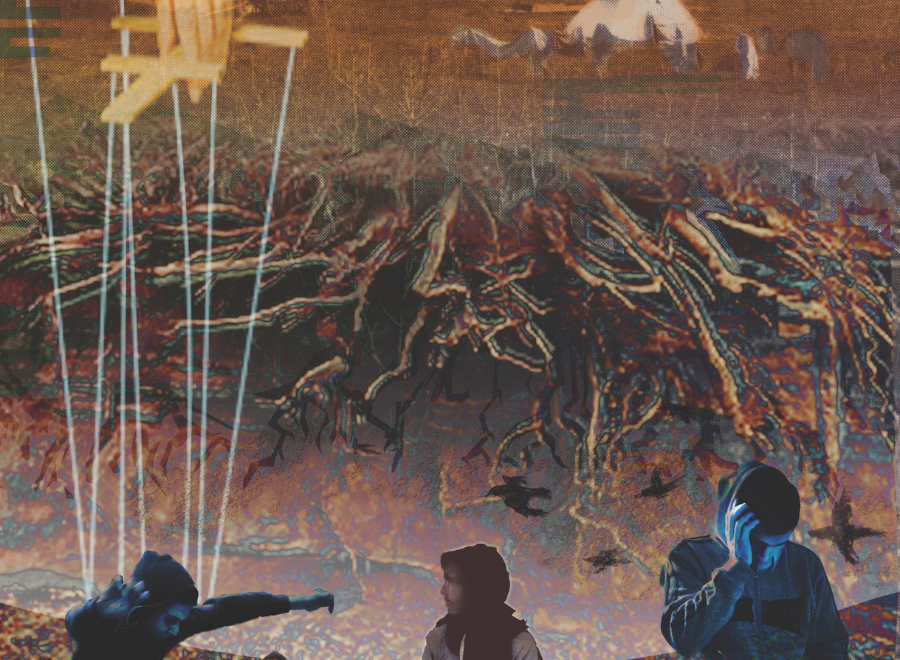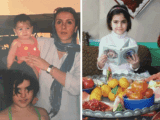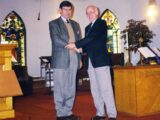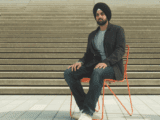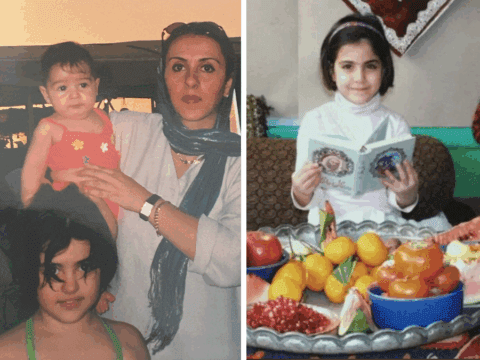Sitting on a couch in a social services office in Vancouver’s east end, Candi* seems as composed and confident as any other 30-year-old. Her long, thick black hair is brushed flat and shiny, and she’s looking hip in skinny jeans and boots.
But then, she twists her wrist up into the light — along one vein are 14 tiny, raised white dots. These are IV scars on her sensitive skin, a record, she says, of her many overdoses and suicide attempts during her time on the street.
You may unsubscribe from any of our newsletters at any time.
When you hear her story, it’s easy to understand why she tried to take her own life. Starting when she was a toddler, she says, her father — a survivor of abuse in residential schools — started sexually assaulting her and her brother. At age seven, Candi was removed from her home and placed, alone, in a foster home. But she still wasn’t safe. Her teenage foster brother began to abuse her.
“My mom didn’t have support,” Candi says, as tears drip onto her shirt. “She was just attacked all the time [by her boyfriends]. Everything was always her fault. So I guess it was easier for the government to just take us away from our mom than figure out how to fix our family.”
By 13, Candi was back home. That’s when she started using alcohol, marijuana, acid, heroin and cocaine. She dropped out of school and was sent to live in various group homes. Soon, she was kicked out, hit the streets and had her first baby at 19. Then more, a girl and two boys — four kids by the time she was 26.
Now, Candi’s 12-year-old daughter, Melissa*, is using marijuana and crystal meth, the drugs of choice at her inner-city elementary school. Melissa also recently disclosed that someone in the family had sexually abused her. And she’s cutting the skin on her arms — a classic self-harming behaviour. Her friends live on the street. She’s not coming home at night. Social workers have opened a file on her family, Candi admits.
The cycle has started again.
“No matter what I achieve today — college, sobriety — my past still hovers there. Sometimes when I look at myself, all I see is my inner scars. It’s like I’m inside out.”
In her pain and in her powerlessness before the child-protection system, Candi isn’t alone. Across Canada, almost half of the 30,000 foster kids under 14 are Aboriginal, according to the 2011 National Household Survey. It’s a stunning number. In fact, more Aboriginal kids are in the foster care system today than lived in residential schools at the height of the schools’ operation.
It’s no “system” at all, but a patchwork of provincial and territorial departments, plus literally hundreds of federally and provincially funded Aboriginal agencies. They deliver a range of services, from investigations to child apprehension, family support and supervision, kinship care, foster care, adoptions, group homes and independent-living contracts for older teens.
Too often, foster care produces terrible outcomes. If B.C.’s statistics hold true for the rest of the country (national statistics do not exist), less than half of all foster kids graduate from high school on time. Four in 10 are charged with a crime before they leave the system at age 19. And around 40 percent of homeless youth are former foster kids (half of homeless youth are Aboriginal).
Abuse is rife. In B.C., for example, where the Ministry of Children and Family Development is involved with approximately 30,000 kids at any given time (about a third of whom are in foster care), 532 children and youth died between June 2007 and January 2013, and about 40 percent of those deaths were flagged for review. Another 1,228 young people were critically injured, which includes everything from innocent accidents to sexual assault and suicide attempts. To some, the analysis is simple: foster care is the residential school of the 21st century.
That’s what Cindy Blackstock argues. She’s the executive director of the First Nations Child and Family Caring Society and the country’s most vocal advocate for improving child protection on reserves. The same underfunding and discrimination that led to the residential school abuses underlies the brokenness of today’s foster care, she says.
“Poverty, inadequate housing and addiction. These are all things we can do something about,” says Blackstock, noting that the mass apprehensions of Aboriginal children will continue until the root causes of family dysfunction are addressed.
The Caring Society is currently fighting for equitable child-protection funding on reserves in a Canadian Human Rights Tribunal complaint against the federal government. Currently, Blackstock explains, these services are underfunded by at least 22 percent compared to similar off-reserve programs. It’s discrimination, she argues; fix that and child apprehension rates will drop.
“Canada’s behaviour in residential schools and Canada’s approach to foster care today are the same. If Canada knows better, then it should do better.”
If it’s true that a straight line can be drawn from residential schools to foster care, reconciliation becomes much more complicated. Canada has closed its residential schools and apologized for the historical racism and abuse. But foster care — which aims to remove kids from unsafe and abusive circumstances — can’t just be cut off. Even Blackstock believes that some kids need to be removed from their homes.
For United Church leadership, this is new territory. Millions of dollars have been invested in Aboriginal causes since the church’s 1998 apology for its involvement in residential schools. This money is designated for healing a painful legacy. Similarly, the Truth and Reconciliation Commission (TRC), scheduled to wrap up next June, is focused on healing the present through healing the past.
But Blackstock argues that this isn’t an old scar; it’s a gaping wound, as open in 2013 as it was in 1963.
If foster care is the residential school of the 21st century, does the United Church have a moral obligation to advocate for change?
Yes, according to Rev. James Scott, General Council’s officer for residential schools. He’s the church’s representative to the Truth and Reconciliation Commission and has been involved in this work for more than two decades. Over the past five years, Scott explains, the church’s reactive discussion about residential schools has shifted. These days, it’s a proactive conversation about right relations now and in the future — including land claims, treaty rights and foster care.
“If the church is serious about a long-term commitment to living out its apologies, it has to address the long-term impacts of the residential school system,” he says. “It’s about becoming aware of and addressing the rippling after-effects of this on families and communities. We are trying to understand the residential school system as part of a larger picture which has a number of other injustices that continue to go on.”
Even though not every Canadian — or United Church member — is on board with this approach, Scott says he’s witnessing a change. At the national TRC event in Montreal in April, he noticed a large number of non-Aboriginal people. “Just a few people honked or swore at protesters. . . . We’re not quite at the tipping point. This is not going to win or lose an election. But I think it’s coming. I see momentum.”
However, John Milloy isn’t so sure. He’s a history professor at Trent University in Peterborough, Ont., a special adviser to the TRC and the author of A National Crime: The Canadian Government and the Residential School System, 1879 to 1986, one of the first books to connect residential schools and foster care.
“I’m not very impressed by the response of the public in general on Aboriginal issues, more so on residential schools, and even more on fostering and adoption,” he says. “It’s not even on the radar yet.”
During Idle No More, Milloy observes, many Canadians voiced their frustration that Aboriginal people won’t move off reserves, get jobs and quit being so marginal. In the court of public opinion, a complex analysis about historical context is pretty much out of the question. So galvanizing outrage about contemporary foster care is much harder than asking the public to condemn residential schools.
“The fact is, there are real problems in those [Aboriginal] communities,” Milloy says. “We may find the rates of apprehensions unfortunate . . . but you can’t be the poorest and most dysfunctional people in the country, in terms of education, substance [abuse] and unemployment, and not expect social workers to show up. . . . It’s going to take some pretty deep thinking about the nature of Canadian society before we change that.”
He also points out that for the last 30 years that residential schools operated, they mostly housed children whose parents could not look after them. The United Church, he notes, was essentially administering group foster care — setting the stage for the contemporary, government-run system.
Back in the 1970s in White Rock, B.C., Alvin Dixon fostered four teens and adopted a child out of the foster care system. His social worker at the time delayed sending kids to him and delayed the adoption, he recalls. When Dixon asked him bluntly if the reason was his ethnicity, the social worker said yes. Originally from Bella Bella, B.C., Dixon is a member of the Heiltsuk First Nation; as a child, he attended the United Church-run Alberni Indian Residential School.
Now, as the chair of the United Church’s residential schools steering committee, Dixon clearly sees the connections between residential schools and today’s foster care system. He believes the church can and should contribute to fixing child protection in this country.
“United Church leadership has done tremendous work with reconciliation, but people in congregations are not picking it up at the same speed,” he says. “I’d say our first job is to tackle the racism issue. That means we need to spend more time together, to get rid of the racism.”
Meanwhile, tens of thousands of Aboriginal moms like Candi are living with the effects of foster care as it is today. Repairing the system, as well as the circumstances that lead to Aboriginal children being apprehended by the thousands, is daunting and complex.
But to Candi, the answer is simple. She wants the social workers who are buzzing around her family to understand why they’re there and why they’re needed.
“I wish the social workers had helped my mom. Understood my mom. Stuck by my mom. Listened to my mom. Not judged my mom. I wish they’d known what residential school is. Known that she wasn’t able to be a parent. Taught her how to be a parent. Today I forgive her. Today I love her no matter what. Today I understand her.”
* Names have been changed for privacy
Pieta Woolley is a journalist in Powell River, B.C.
***
This story first appeared in The United Church Observer’s October 2013 issue with the title “A new chapter in an old tragedy.”

